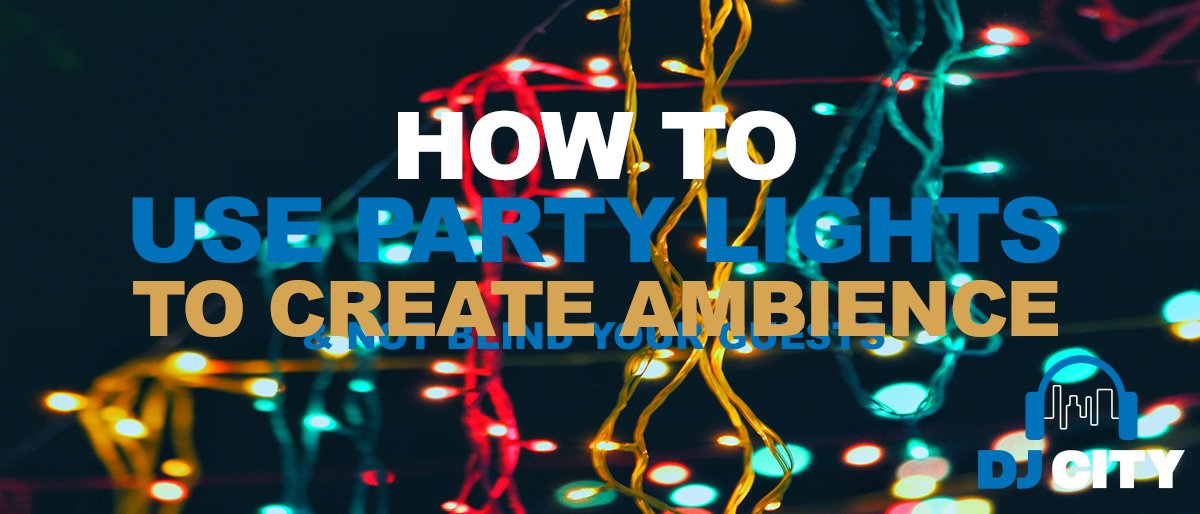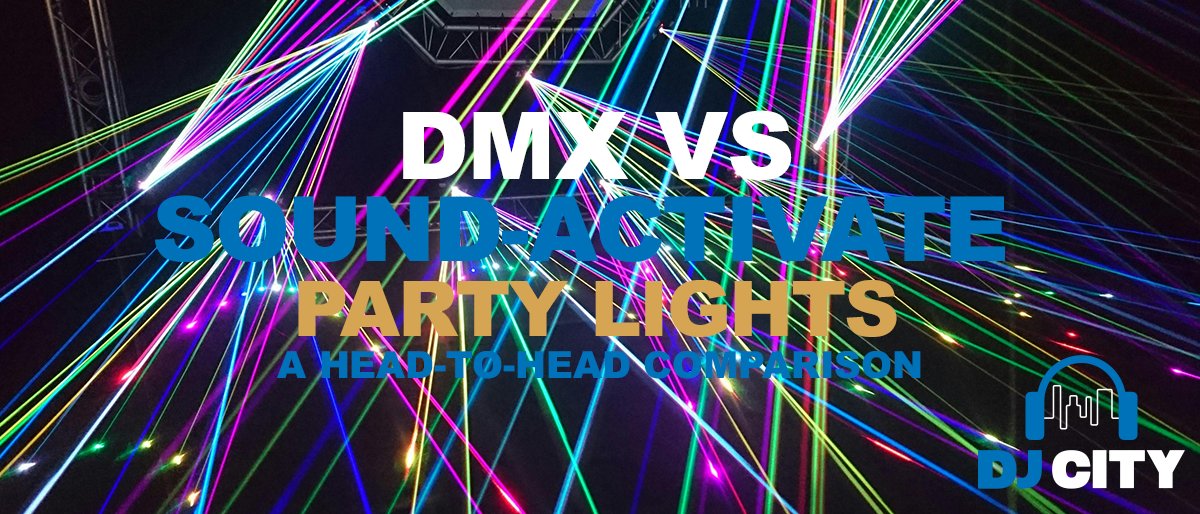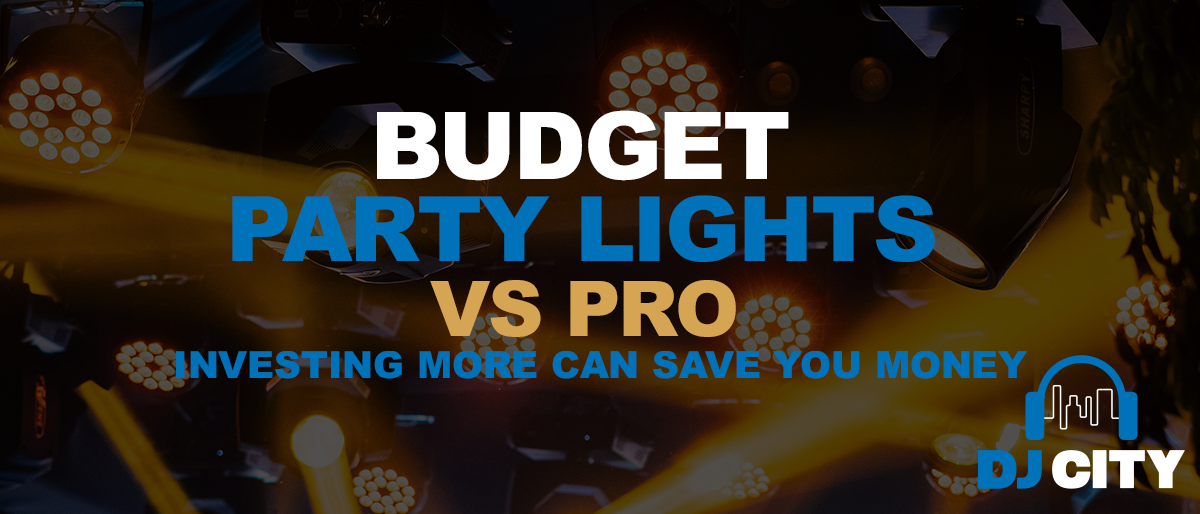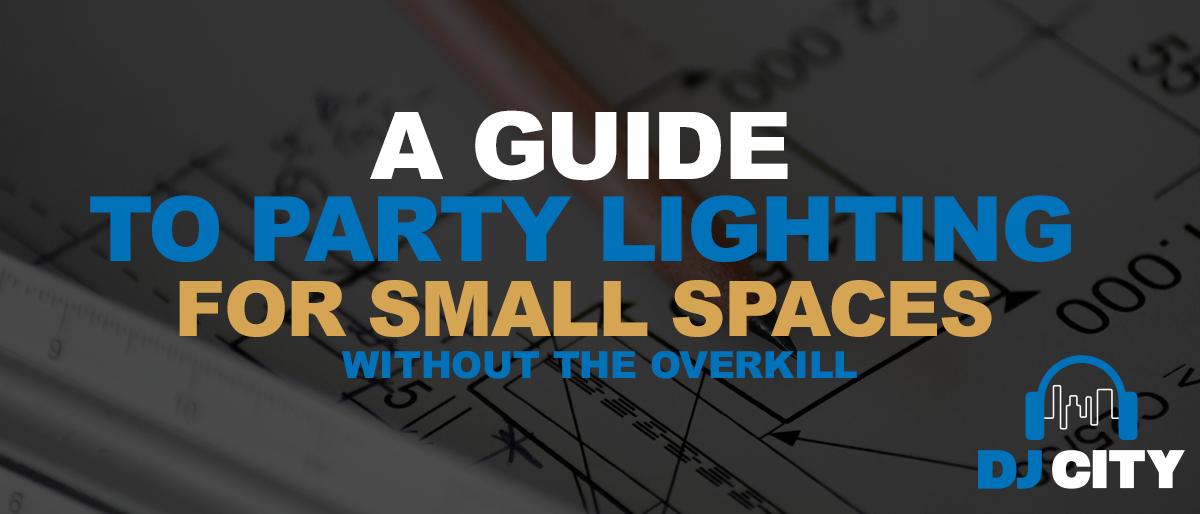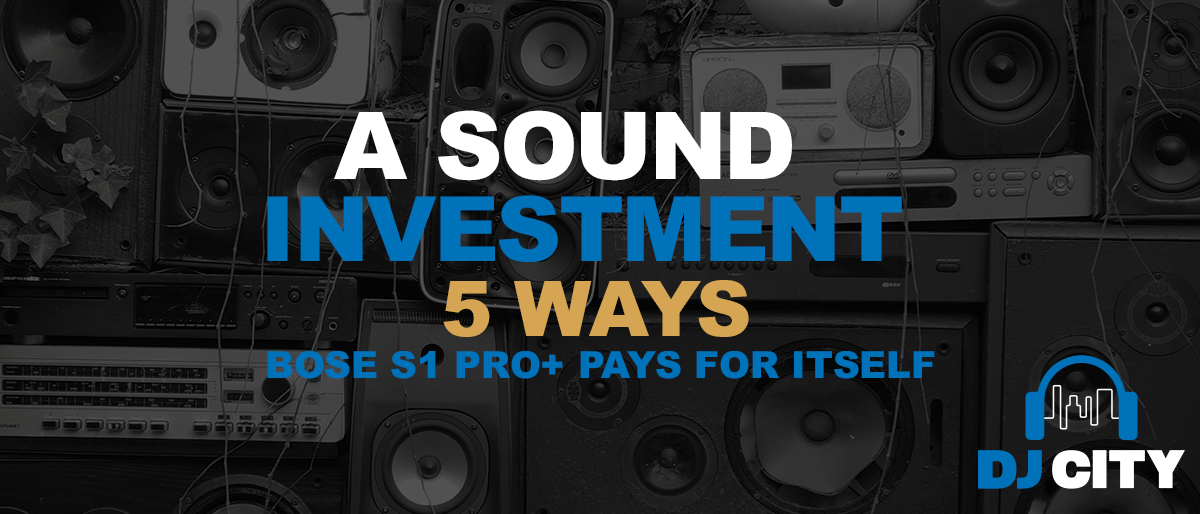
Best DAW for Beginners: Ultimate Guide | DJ City
If you’re looking to use your computer to record music or begin your music production journey, you’re going to need a DAW or Digital Audio Workstation to do so. But with so many options available, it’s hard to know which is the best DAW for beginners.
At the end of the day, the DAW you decide to use needs to give you the tools to get the job done and create music. As they all operate slightly differently, it’s helpful to know which options might be more suitable than others, especially if you’re just starting out.
Finding the Best DAWs for beginners
In this article, we cover exactly what a Digital Audio Workstation is, what it does, why you need to use one, as well as cover which are the best DAWs for beginners.
- What is a DAW?
- What to consider?
- Trial & Lite Versions
- Best FREE DAW’s for Beginners
- Best PAID DAW’s
- Ableton Live
- FL Studio
- Cubase
- Reason
- Logic Pro X
- Cockos Reaper
What is a DAW or Digital Audio Workstation?
If you’re learning how to produce or record music/audio you might have heard the term DAW (which stands for Digital Audio Workstation) already. But what exactly is a DAW, and why do you need one?
In short, a Digital Audio Workstation refers to music production computer software.
Whether you’re looking to produce, record, mix music or edit audio tracks, without a DAW on your computer, your USB MIDI keyboard controller and studio equipment will be useless.
Thanks to the help of the right musical production software, you can start creating original compositions, making sample-based beats, recording instruments, using software instruments and performing creative sets in no time.
You don’t need copious amounts of expensive hardware when you can do it all right on your computer’s DAW.
What can the Best Digital Audio Workstations do?
DAW software offers a built-in mixer within the audio track editing software. Typically they include a selection of functions such as:
- Audio Editing
- Midi keyboard Editing
- Recording
- Audio Processing
- Sequencing
- Arranging
- Sampling
- Built-in Plugins & Support for external Plugins and VSTs
- Live Performances
- and so much more
How to Choose the Best DAW for Beginners
The right DAW for your needs is the one that is going to enable you to create amazing-sounding audio. So there’s no one-size-fits-all solution for everybody.
What matters most is going to be choosing the option that appeals to you and offers the right functionality for your needs. Of course, budget is also a consideration.
Then, it’s just a matter of putting enough time and effort into learning how to use it to the best of your ability.
What to look for in your DAW
1. Intended Use
It’s certainly worth taking into consideration your intended use for your software. You’ll find some DAWs cater more towards electronic music production and live performances, while others are more focused on tracking and mixing.
2. Price and Features
While every DAW has powerful capabilities, the main differences usually include price, operating system requirements, and the included plugins/virtual instruments (or lack of).
3. Intuitive Design
You will want to choose a DAW that feels natural to you. There are so many options out there that are often branded as the best software for DJs, or the easiest to learn. Sometimes different programs will resonate with you more than others.
So you might find that the DAW regularly dubbed the most difficult to learn, comes more naturally to you. That’s why trial versions are very useful!
4. Try the Trial Versions
Almost every single DAW available has either a free/demo version or a trial of the full version available. A good idea would be to choose a handful of DAWs that pique your interest, and download the trial versions of each and try creating some audio tracks.
This will allow you to try out and get a feel for a few different options before spending your hard-earned cash.
Don’t spend too much time trying to figure out which DAW you like best. The idea is to get a little bit of a feel for each rather than learning each DAW software in its entirety.
Once you know what works for you and what doesn’t you can start selecting the particular software options that will best support your workflow and make music creation a breeze.
5. What do your friends use?
Social proof is one of the best ways to help find the right product or service. If you have friends who are into music production, ask for their opinion as to which is the best DAW for beginners. However, don’t just blindly purchase their recommendation. Simply add their suggestion to your list of software to try out.
6. Check the Pricing
One of the biggest factors for most of us when choosing a DAW is affordability. If you’re just getting started and you’re using a small home studio, likely, you’re not going to have the money to fork out for the most expensive DAW.
But that’s okay, most DAWs also offer a selection of tiers that accommodate for all budgets and needs. So rather than getting the premium edition, you can get the same piece of software but typically with fewer sounds and features.
Remember, you can always upgrade when your recording studios/budget calls for it. If you’re a student, you might be eligible for a student discount as well.
All in all, DAW’s are rarely dirt cheap, but the price is worth it. You’re paying for high-quality and professional software that will stick with you throughout your music career.
The Limitation of Cheaper DAWs
Some cheap DAWs on the market will offer a great solution for simple audio recording needs like podcasting and voiceovers.
However, if you’re looking to get into music production, more often than not you’re going to benefit from spending a little extra money for one of the more professional options like FL Studio or Ableton.
That way, you’re going to get a host of included features that you’re not as likely to find on a cheaper DAW. As a result, you’ll notice your music production progresses a lot quicker. Otherwise, you might find yourself spending more on additional sounds and plugins.
The Best DAWs For Beginners That Are Free
This wouldn’t be a complete DAW guide without mentioning the free DAWs available on the market. There are heaps out there, but the most popular are:
Cockos Reaper also offers a heap of capabilities within the limitations of their free version if you’re a little bit more technically inclined.
If you’re serious about music production, learning on a free DAW before having to relearn a new paid program can be a very time-consuming exercise.
So it’s important to value your time, skills, and the craft you’re passionate about learning and choose the DAW that’s right for what you need.
DAWs for Podcasts
Now if you’re someone just looking for a DAW to record a podcast, I’d recommend jumping on one of the above free versions.
You’re not going to need all the advanced functionality you’ll find in an expensive DAW that’s focused on music production. We’ve even put together a how-to guide that will help you navigate your way around Audacity below.
How to record a podcast in Audacity
The Best Paid DAWs for Beginners
Ableton Live
First up, we’ve got Ableton Live. What makes this software so unique is the fact it was originally designed primarily as an instrument for live performances.
Since then, it’s transformed into an all-in-one complete recording package and is among the best DAWs for beginners. Ableton is one of the most popular options thanks to its simple user audio interfaces and streamlined workflow.
Several Ableton-specific controllers make integration a breeze.
Ableton is renowned for having its unique Session View & Arrangement View. Its Session View is perfect for getting your ideas out quickly, which you can then use to play your music live.
Alternatively, Arrangement View gives you a more traditional, linear view that’s great for arranging and mixing down your tracks.
As we touched on before, many DAWs offer different tiers to accommodate a range of artists and Ableton is no different. This means you can pick up the intro version for a little over $100, and you’ll have everything you need to start putting together melodies and grooves.
With the Intro version, you’ll get a sound library of over 5GB, as well as 21 built-in audio effects and 8 MIDI effects. You’ll also have capabilities for 16 audio and MIDI tracks, 8 scenes, 2 send and return tracks, as well as 4 mono audio and input channels. On top of that, the Intro version gives you 4 software instrument tracks including Drum Rack, and Impulse. Simpler, and Instrument Rack.
Above all, Ableton Live Intro offers you everything you need to record, mix, and perform professional-sounding music! It’s also one of the most affordable options.
FL Studio
Previously known as Fruity Loops, FL Studio has quickly become one of the go-to DAWs for music producers worldwide. Offering a simple and easy-to-use navigation and interface that’s great for beginners, FL Studio is now the number one choice for intermediate producers as well.
Centred around its renowned piano roll and trademark step sequencer, FL Studio is incredibly easy to wrap your head around and offers several powerful production tools to suit your workflow.
There’s also an intuitive arrangement view that allows you to easily arrange your audio, automation, and pattern clips.
What’s more, given that FL Studio is so popular, there’s a massive online presence within forums and YouTube tutorials; so you’ll be able to find everything you need to get started and learn the ins and outs of music production.
Like Ableton, FL Studio offers several different tiers with their Fruity Edition, Signature Edition, and Producer Edition. For most beginners, the Fruity Edition will have everything you need. However, it does not double as an audio recorder.
So if you’re looking to record vocals within your DAW, you’ll have to upgrade to at least the Signature Edition.
Another important note worth mentioning, FL Studio is the only DAW on this list that offers free lifetime upgrades. So you’ll always be up to date with the latest musical production software without having to fork out even more money!
The good news, FL Studio offers a trial version that allows you to test out the complete version of the software. The only downside to this is that you can’t save your projects and revisit them later. But it’s the perfect solution for testing the waters before you decide if it’s the best beginner DAW for you.
FL Studio was long disregarded by many in the industry due to its extremely user-friendly interface. However, that opinion has now changed for the most part with many of the most prominent producers swearing by the software as their go-to DAW.
When it comes to designated controllers, there are not as many software-specific options as you have for Ableton. But in saying that, you’ll find nearly every single keyboard with MIDI capabilities will work just fine. If you are looking for a software-specific solution, the Akai Fire gives you a grid-based FL Studio controller that offers a fun way to immerse yourself in the music.
For years, one of the biggest drawbacks of FL Studio was the fact it wasn’t compatible with Mac computers. However, since the FL Studio 20 update a few years ago, Apple compatibility for Mac users has been included, allowing FL Studio to reach the workstations of even more consumers.
As a result, FL Studio is now being downloaded over 30,000 times every day and is used by some of the biggest names in the industry.
Whether you’re producing Hip Hop, EDM, or you’re a DJ producing mashups, you’ll have no problems creating professional-sounding music.
Cubase
Steinberg’s Cubase is the oldest DAW on the list but it won’t be going anywhere anytime soon.
The latest version has upped the user interface game and made it much easier to wrap your head around using its program. You’ll find all the standard features of a typical DAW, as well as some amazing MIDI editing tools that you won’t find on some of the other options.
A little-known fact about Cubase is that Steinberg themselves are responsible for creating the popular VST plugin format that has been adopted by almost every DAW and music plugin you’ll see today.
One of the biggest downsides to using Cubase is the fact it relies on having a dongle to activate and use it. So you’ll have to make sure you have enough USB ports available at all times when you want to create within your DAW.
Above all, Cubase is an all-rounder Digital Audio Workstation with pristine audio quality. It offers a range of tiers to choose from including Cubase Elements, Cubase Artist, and Cubase Pro.
You can also find Education versions of each which can save you a little extra money if you’re a student.
Additionally, there are cross-grade options that give you an incentive to switch over to Cubase if you’re not happy with your current DAW.
Above all, if you’re looking for the best DAW for beginners, Cubase Elements provides the perfect starting point for intuitive songwriting, studio-grade recordings, and finalising your mix.
There’s also a 30-day trial so you can get a feel for the software and see if you like it. As well as dedicated Steinberg tutorials that run you through all the basics to get you started.
Reason
Another great DAW that’s a perfect solution for beginners is Reason. Originally developed by a company called Propellerhead, they then changed their name to Reason Studios with the release of Reason 11.
The most notable feature of Reason is its unique “Rack style” layout that is still pretty unique. Thanks to its modular nature, you can essentially route any one of your plugins or software/virtual instruments to one another just like you would with MIDI, CV, and gate.
So if you’re already hardware inclined, this will be the perfect gateway towards digital production.
If you’re not well-versed with traditional hardware, no need to stress. The user experience is super intuitive and will help you learn and understand how things connect more than alternative DAWs.
One of the biggest drawbacks of Reason in earlier versions was the fact it didn’t support any external VST plugins. Meaning you had to do everything you wanted inside the DAW. Or, bounce your tracks and open them up in another audio editor together to add finishing touches or additional VST instruments to your creation.
Thankfully, Reason 11 has finally introduced support for your VSTs. It even has the ability to use the Reason Rack as a plugin itself with other DAW’s such as Pro Tools.
If you’re just starting, the best beginner DAW option is going to be Reason Intro, which should have everything you need to start producing.
There’s also Reason Standard and Reason Suite when you’re ready to upgrade to the full version.
It’s worth noting that there are not as many resources and tutorials readily available online as there are for other beginner DAWs like FL Studio.
But in saying that, there are still plenty of videos available to help you learn the basics and set you on your way.
Logic Pro
Logic Pro is a piece of software developed by Apple, so it’s no surprise that it’s only compatible with Mac.
Even so, Logic Pro X has been a staple piece of software for electronic music producers for years. Designed with producers in mind, Logic has a super simple-looking interface combined with a library full of presets and sounds.
While Logic Pro is perfect for producing music, it’s also loaded with features for different applications. So no matter what your end audio goals are, you’ll find plenty of functionalities that will help you get the job done.
It also boasts access to several powerful plugins that are said to be among the best stock plugins available. Some of the most notable Logic Pro users include Calvin Harris, Swedish House Mafia, Disclosure, and David Guetta among many others.
Unlike the other DAWs on this list, Logic doesn’t have a string of versions for you to choose from. So you’ll be forced to fork out the roughly $320 which is a fair bit pricier than some of the alternative intro editions.
Thankfully, there is a trial version available so you can get accustomed to the program and see if it’s for you.
Reaper
Cockos Reaper is one of the most affordable DAWs on the market. It quickly grew in popularity thanks to its once unlimited free trial, and ever since it’s accumulated a huge following.
Unfortunately, the evaluation period is no longer free, however, you’re still able to test out the full version of the software for up to 60 days. Then if you like it, you can get your hands on a full license for under $100.
Reaper has all the standard features of a DAW, although it’s less focused on electronic music production than some of the other options on this list. You may have to procure a range of plugins and sounds to produce the sounds you’re after.
If you’re not looking to produce music and are strictly looking for a DAW to record, mix, and master your audio; you can’t dismiss the power of Reaper as a beginner DAW.
It’s also highly recommended for those seeking a DAW to record vocals, podcasts, or voiceovers, or to simply record external instruments such as guitars.
Which is the Best Beginners DAW For You?
At the end of the day, the best DAW for a beginner is going to be whichever one you end up buying and getting used to. All of the options we’ve mentioned above offer the tools you need whether you’re producing or recording.
There’s no objectively right answer between Ableton, FL Studio, or Cubase (or the others). The secret is investing enough time in your chosen DAW to learn the ins and outs. Whichever one you choose, you’re sure to find plenty of free resources online that are going to help you learn how it works.
Remember: During your search for the best beginner’s digital audio workstations download a couple of trial versions for the ones you think you might like. Give them a test drive and then choose the one that comes easiest to you!



